Results
-
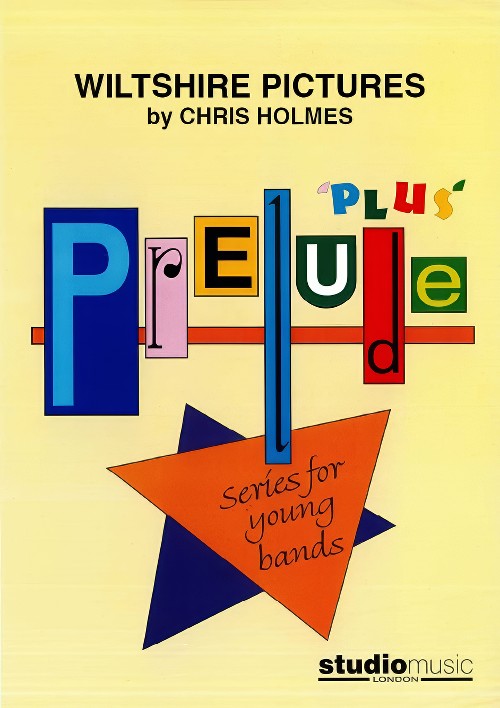 £59.95
£59.95Wiltshire Pictures (Concert Band - Score and Parts) - Holmes, Chris
Movement 1: Army on the Plain - More than 10% of Wiltshire is used by the Army for training, and all of it takes place on Salisbury Plain. As well as tanks and weapons of all sizes, there is plenty of marching!Movement 2: Spire - Since 1549 Salisbury Cathedral has had the tallest spire in the UK, at 123 metres. Majestic and awesome it soars over the elegant and peaceful Cathedral Close.Movement 3: Sarsen Stones - Stonehenge's vertical Sarsens weigh 20 tonnes and stand 7 metres tall, they are heavy!Movement 4: Moonrakers - From the 15th to the 18th century, there was much smuggling of illegal gin in Wiltshire. The story goes that a group that was trying to rake out barrels hidden in a village pond, and surprised by the Excisemen, feigned stupidity. They told the Excisemen they were trying to rake in the moon, reflected on the ponds surface. They were believed and left in peace! Wiltshire folk can still call themselves Moonrakers.Duration: 11:15
Estimated dispatch 7-14 working days
-
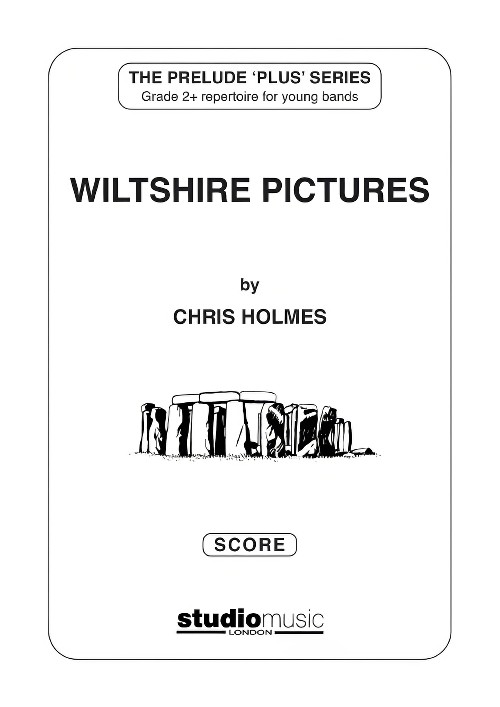 £11.95
£11.95Wiltshire Pictures (Concert Band - Score only) - Holmes, Chris
Movement 1: Army on the Plain - More than 10% of Wiltshire is used by the Army for training, and all of it takes place on Salisbury Plain. As well as tanks and weapons of all sizes, there is plenty of marching!Movement 2: Spire - Since 1549 Salisbury Cathedral has had the tallest spire in the UK, at 123 metres. Majestic and awesome it soars over the elegant and peaceful Cathedral Close.Movement 3: Sarsen Stones - Stonehenge's vertical Sarsens weigh 20 tonnes and stand 7 metres tall, they are heavy!Movement 4: Moonrakers - From the 15th to the 18th century, there was much smuggling of illegal gin in Wiltshire. The story goes that a group that was trying to rake out barrels hidden in a village pond, and surprised by the Excisemen, feigned stupidity. They told the Excisemen they were trying to rake in the moon, reflected on the ponds surface. They were believed and left in peace! Wiltshire folk can still call themselves Moonrakers.Duration: 11:15
Estimated dispatch 7-14 working days
-
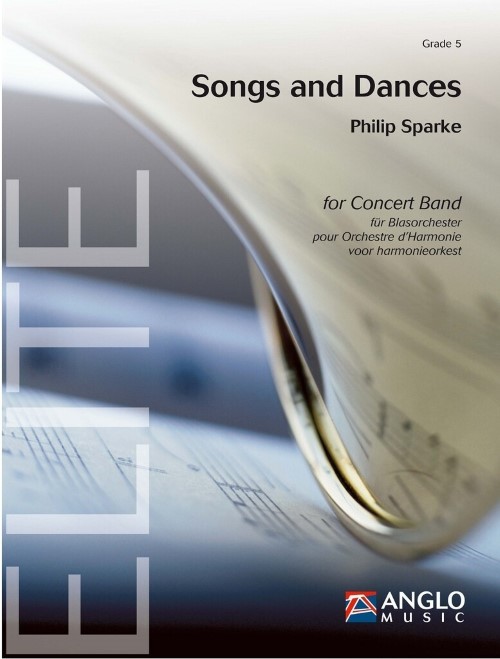 £164.99
£164.99Songs and Dances (Concert Band - Score and Parts) - Sparke, Philip
Songs and Dances is a festive and energetic work with an emphasis on music with a rhythmic, dance-like quality. Its three continuous movements are set in a fast-slow-fast form. Highly syncopated themes, flowing chorales and attractive melodies: what more could one wish for? This piece offers enjoyment for musicians and listeners alike.Duration: 11.00
Estimated dispatch 7-14 working days
-
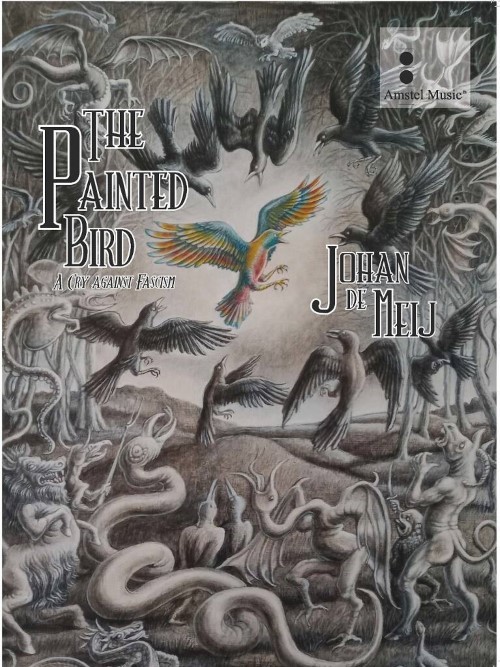 £189.00
£189.00The Painted Bird (Concert Band - Score and Parts) - De Meij, Johan
A Cry against FascismThe Painted Bird, the controversial novel by Jerzy Kosinski (1933-1991), tells the story of a Jewish boy during World War II. For his safety, the child was sent to the Polish countryside by his parents. The title refers to a barbaric tradition among Polish farmers. The wings of a captured bird were painted in bright colours, after which the animal was released. Almost immediately, the bird was attacked and pecked to death by its peers. The boy underwent the same fate. Wherever he wandered, the local rural people cruelly mistreated him because of his distinctly different appearance. However, he survives the horrors and is reunited with his parents after the war. To escape the yoke of the Soviet occupation in his country, the Polish-Jewish Kosinski emigrated with counterfeit papers to the United States in 1957, where he became an American citizen in 1965. His landmark novel The Painted Bird was translated into thirty languages and sold millions of copies. Plagued by illness and accusations of betraying his country and plagiarism the writer ended his life in 1991.Duration: 11.00
Estimated dispatch 7-14 working days
-
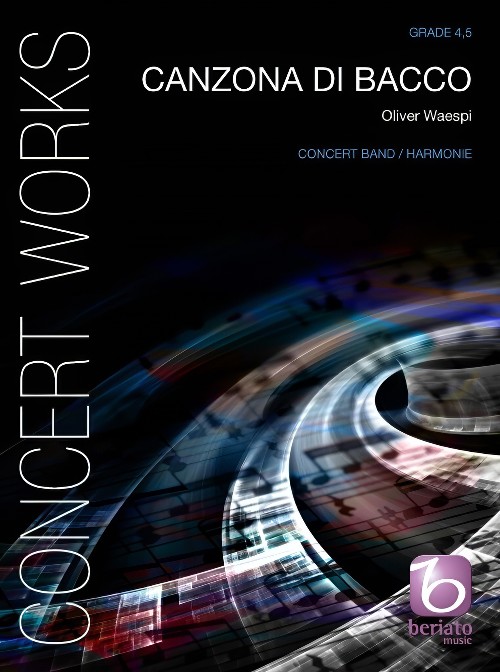 £129.99
£129.99Canzona di Bacco (Concert Band - Score and Parts) - Waespi, Oliver
This piece comprises a series of variations on the melody of Ami, dans cette vie (Friend, in this life), an 18th century French song. Like the famous poem Canzona di Bacco by Lorenzo de Medici, this song invites the listener to enjoy life, friendships, love and wine while there is still time to do so. The epicurean nature of this text contrasts with a deeply melancholic melody, a contradiction which is explored in the present work. After a somewhat turbulent first part, the original melody is revealed in a serene and pensive middle section which highlights several soloists. In the last movement, the atmosphere is transformed to become increasingly exuberant, like a Bacchus incantation. The piece concludes with a final dazzling statement of the original theme.Duration: 11.15
Estimated dispatch 7-14 working days
-
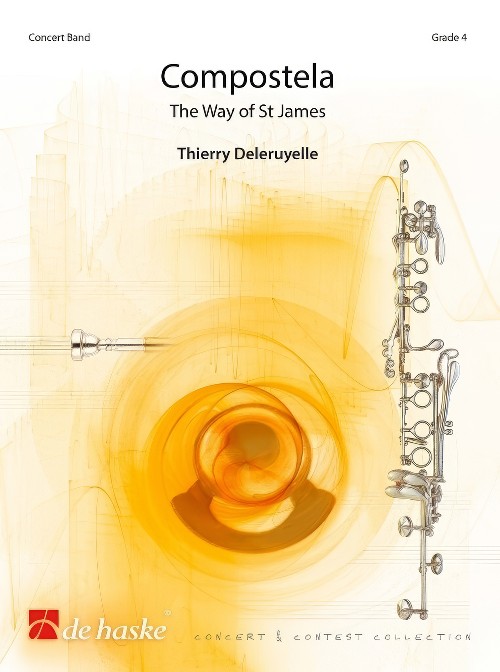 £134.99
£134.99Compostela (The Way of St. James) (Concert Band - Score and Parts) - Deleruyelle, Thierry
Four roads lead to Santiago, so begins the Book of the Pilgrim. Written in the 12th century, the Codex Calixtinus opened the way for pilgrimage from most cities in Europe and North Africa to Santiago de Compostela, in Spain. Compostela - The Way of St James describes the pilgrims' journey. After a slow introduction, a brilliant theme announces the start of the journey. The arrival in Spain is indicated by incantatory chants and majestic chords. Finally, the music softens as the pilgrims venerate St James.Duration: 11.30
Estimated dispatch 7-14 working days
-
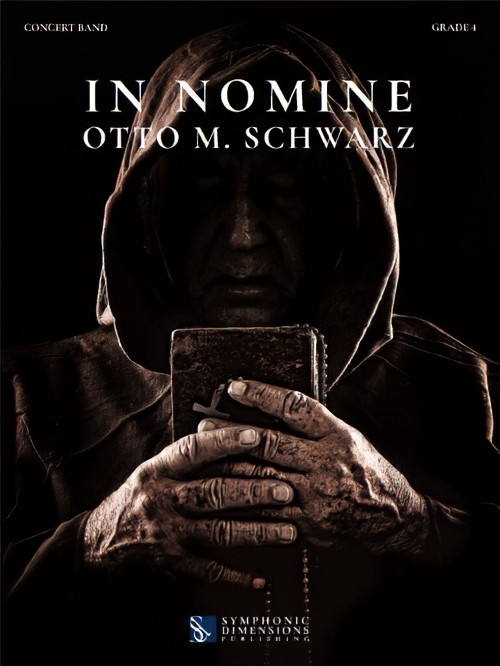 £159.99
£159.99In Nomine (Concert Band - Score and Parts) - Schwarz, Otto M.
How often has something been justified by, declared to be, or blessed as 'in the name of' some cause or other? How can it be that opposing armies and the use of weapons are ever 'in the name of...'? This is a common thread in the history of different faiths. Good was created but evil was committed and all 'in the name of...' This thread is also found in the history of the Premonstratensian Abbey at Wadgassen. The abbey was built in the 12th century on unfertile, desolate moorland, which later evolved into the most powerful religious community in the Saarland. The history of the abbey records quite astounding achievements under the motto desertum florebit quasi lilium ('the desert will bloom like a lily'); but also the harsh treatment of delinquents. The order had its own school, in which children were taught the seven liberal arts (which included music as well as geography and astronomy), but the poor were left to starve outside the abbey walls and were only allowed to eat from the members' leftovers on feast days. The medieval witch trials demanded their pound of flesh, and one group that fell victim were ecstatic dancers who moved wildly to music, which was interpreted as the devil's work. The result: a show trial that sentenced the dancers to death by fire. All in the name of... The year is 1789: Abbot Bordier is in the tenth year of his command. He does not yet know that he is to be the last abbot of an almost 700-year tradition. Not far from the abbey is the French border, which has long been making itself felt with the sound of gunfire, and the brothers continue to keep a nervous eye on it. The first portents of the French Revolution loom, but no one wants to believe it, that is, until the French pound the door down, storm the abbey and come right into the brothers' chambers. In a blind fury, all the pipes of the abbey organ are torn out, icons beheaded with swords and brothers beaten death while numerous buildings are set on fire. The abbey church is in flames. A frantic and desperate escape begins. Abbot Bordier and a handful of brothers make their getaway via the River Saar, adjacent to the abbey, to the neighbouring village of Bous. They survive, but their life, the Premonstratensian abbey, is destroyed. While they flee towards Prague and the sanctuary of the Strahov Monastery, the abbey at Wadgassen is razed to the ground and becomes a stone quarry. The desert blooms once more, however. A few short decades later, a glasswork arises from the foundations of the abbey. As peace returns to the region, it brings jobs and a new vision for its people.Duration: 11.15
Estimated dispatch 7-14 working days
-
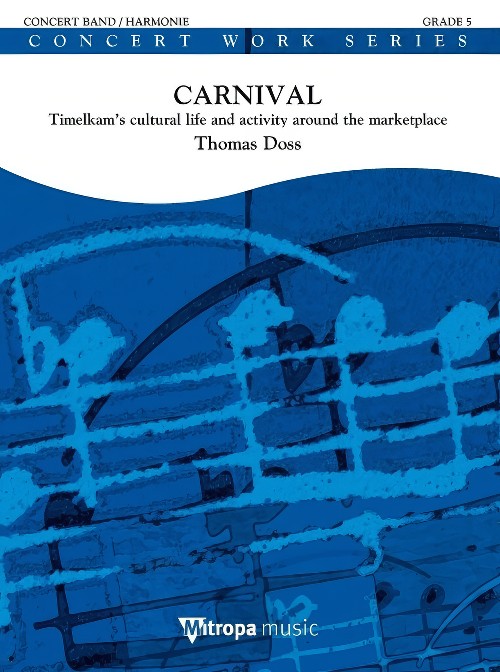 £159.99
£159.99Carnival (Concert Band - Score and Parts) - Doss, Thomas
This work was commissioned by Marktmusik Timelkam to celebrate its 170th anniversary. It describes the cultural life and hustle and bustle of the band's home base, the Austrian town of Timelkam. Carnival pictures a festive procession starting at the marketplace and lasting well into the night. The work features many carnivalesque elements and is a joy for players to perform. There is a lot of merry activity going on in the music; people cheerily chatting in the inn; singing and dancing together and having fun. There is also room for a melancholy mood, accompanied by reminiscences about eternal goodbyes and searching for love. With the added musical representation of children's playing and pranks, a beautiful sunrise as well as a depiction of the churches and societies in town, this composition is not just an account of a carnival parade but a small portrayal of life.Duration: 11.30
Estimated dispatch 7-14 working days
-
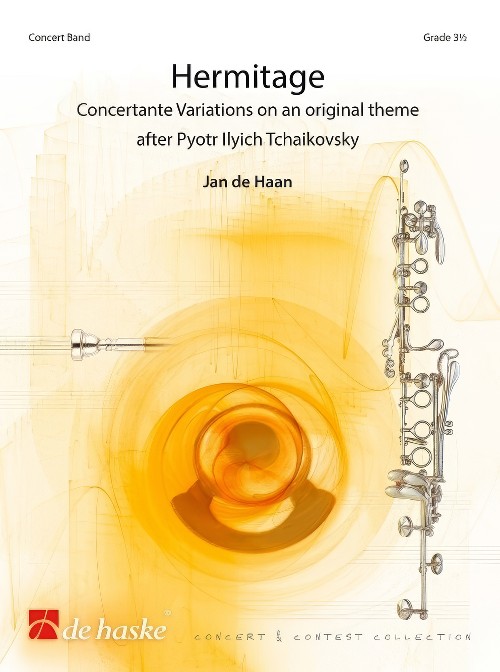 £119.99
£119.99Hermitage (Concert Band - Score and Parts) - De Haan, Jan
Concertante Variations on an original theme after Pyotr Ilyich TchaikovskyJan de Haan drew inspiration for this work from five paintings exhibited in The Hermitage in Saint Petersburg, one of the largest and most versatile museums in the world. He used the melodious Andante cantabile from the String Quartet Op. 11 by the Russian composer Pyotr Ilyich Tchaikovsky as its starting point. Thus, he created his own musical painting, which is just as varied as the underlying canvases, from Cheerful Company by Dirck Hals to Dance II by Henri Matisse. A true work of art!Duration: 13.30
Estimated dispatch 7-14 working days
-
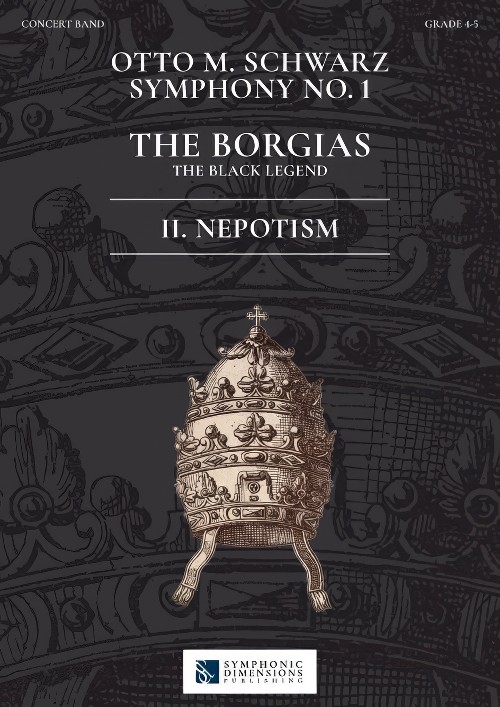 £148.99
£148.99Nepotism (Movement II from Symphony No.1, The Borgias) (Concert Band - Score and Parts) - Schwarz, Otto M.
A sinister legend hangs over the Borgia family, a legend of corruption, abuse of power, orgies, sex and murder. These rumours proliferated especially during the papacy of Alexander VI, a descendant of the family, who was even called the Antichrist. On his death, contemporary witnesses reported that the devil himself prowled around the death chamber and a black dog run along the corridors of the Vatican as his emissary. One might say that this Borgia pope, who ruled together with his family with the greatest brutality, became demonised. Unscrupulousness, poison-toting, incest and other malice are to this day the hallmarks of this pontiffNepotism: Rodrigo Borgia was elected Pope on 11 August 1492. From the very start, the new pope was prepared to use any means to eliminate his opponents, either through the infamous Borgia poison or by excommunication and execution. His son Cesare, who wanted little to do with the church, was appointed cardinal against his will. Alessandro Farnese, broth of Giulia Farnese, the Pope's mistress, also became a cardinal. Numerous Spaniards were brought into the country and were appointed to ecclesiastical posts. This infuriated the opponents of Alexander VI. The Dominican Girolamo Savonarola from Florence demanded the removal of the Pope. He was tortured and banned. Giuliano della Rovere wanted to convene councils to depose the Pope, which Alexander managed to prevent through artful political manoeuvrings. Through great brutality, brilliant political skill and power games, this pope was able to achieve his goal of leaving for his children a great legacy. Alexander VI constantly changed his allies and always acted unscrupulously to improve his financial situation and expand his sphere of influence. At the centre of the second movement of this work is the medieval hymn Dies Irae (Day of Wrath), which acts as a warning in the background condemning the Pope's actions.Duration: 9.15
Estimated dispatch 7-14 working days
